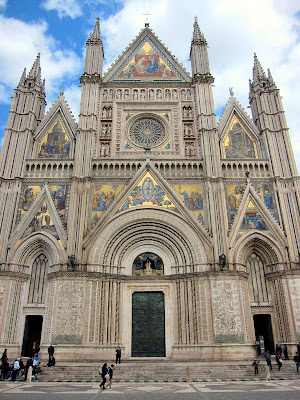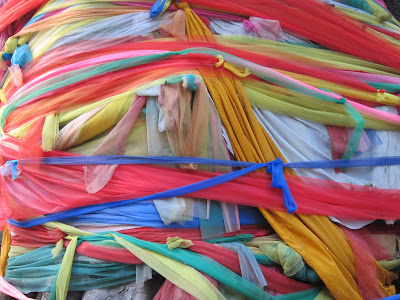When we were considering honeymoon destinations before the wedding, we of course wanted somewhere that exuded romance. And, for us, there is no place that does that like Europe. In looking into Europe, Slovenia quickly became our #1 destination (and I’ll post it next), but since it neighbors Italy, I jumped at the chance to start from there. I loved the idea even more when I learned this interesting fact: the word "honeymoon" derives from the ancient Roman tradition of sweetening the couple's wine with honey for the first month (or moon cycle) of marriage. Honeyed-wine for a moon.
And so we began our honeymoon in Italy. Tivoli, Italy to be precise. Just outside Rome, Tivoli was the playground of Rome's elites, and they built some incredible villas there. It was also the source of Rome's great aqueducts, so it is sprinkled with beautiful springs, fountains, and waterfalls.

I’ve always been rather enamored with Europe. But, as much as it pains me to admit it, 12 years had passed since I was last there. So Italy didn’t have to work real hard to impress me. It can just sit there, with no glitz or glamor, simply enduring the test of time, reminding us of its longevity, and I am reverent. Yes, the Vatican and other such monumental works are astounding masterpieces, of course, but show me the simple pavement stones of the Roman forum, where the Caesars’ feet tread, and I’m euphoric. Nothing moves me more than connecting with history. And I’ve never found a place that does that better than Rome.




In route from Rome to Tuscany lies Orvieto, a medieval hilltop town built on a huge outcrop of volcanic tufa. Its beautiful cathedral with gold mosaic that glitters in the sun is a primary reason for visiting, but the elevation of the town also affords a fantastic view of its surroundings.


The rolling hillside of Tuscany is dotted with ancient stone architecture crowning the hilltops. These little sleepy towns are steeped in history and have changed little since they were constructed centuries ago.







One thing had significantly changed though. Paolo, the beloved director of our study center, had recently passed of cancer. The Santa Chiara Study Center (so named because it is housed in the renovated 600-year-old monastery of the Poor Clare nuns) always had tranquil air about it, except of course during the lively communal dinner, but now it seemed even more hushed than usual, as if the students and staff...as if the whole world...was holding its breath, waiting for inspiration to return.
My husband and I sat on a bench in the small space that separated the Santa Chiara monastery-turned-study center from the church next door. As the hour turned, the church bells rang - the same bells that had announced every hour that I had lived there. How many times had I heard them chime? How many centuries had they unfailingly marked time before I existed? Churches are ubiquitous in Italy, so it seems there are few places in the country where their bells cannot be heard. I was reminded of a story one of my Italian teachers, Marco, had told us. When he had studied in the States, someone had asked him what he missed most from home, and Marco had responded, "I miss my bells."
As they clanged about then, in their special off-key clatter, my eyes welled with tears and that strange laugh-cry caught in my throat, because it seemed they called out to me: "You are home!"
 |
| Castiglion Fiorentino |
Our last stop in Italy was Venice. I had visited before, long ago while living in Italy, and had enjoyed it immensely, but I expected that this time it wouldn't make quite the impression it had the first. I was wrong. Despite years of travel and all the incredible and unimaginable places I have seen, there is still something magical and extraordinary about Venice. Yes, there are the inevitable tourist crowds, which can make it feel kitschy at times. But Venice is a labyrinth of little alleys and canals. Make a few aimless turns, and you will wander into a quiet stretch, sliced with a fetching waterway and framed with crumbling Gothic and Byzantine facades that whisper of centuries past. The architecture, the gondolas, the wine...they all worked their charm, and I fell happily under the Venetian spell again. Venice---a city so in love with the sea it locked itself in an eternal embrace. Who can walk amid their enduring union, tracing their intertwined limbs, and not get caught up in the romance?















































































































